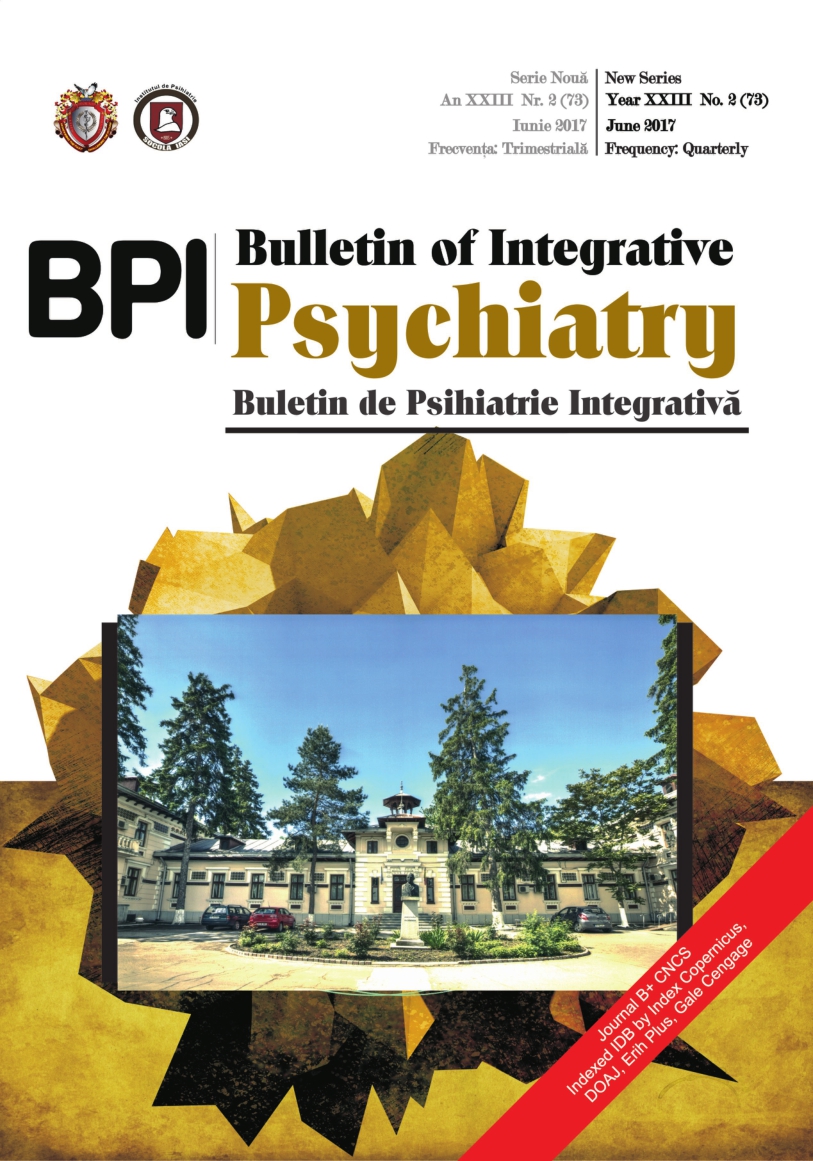spitalizarea non-voluntara a pacientilor cu tulburari afective in concordanta cu legea 487/2002-studiu retrospectiv
THE NON-VOLUNTARY HOSPITALIZATION OF PATIENTS WITH MOOD DISORDERS ACCORDING TO THE 487/2002 LAW - RETROSPECTIVE STUDY
no sub-title
Author(s): Petronela Nechita, Georgiana CRĂCIUN, Andreea-Petronela Pantea, Radu AndreiSubject(s): Essay|Book Review |Scientific Life
Published by: Editura Sedcom Libris Iasi
Keywords: MOOD DISORDERS; 487/2002 LAW;NON-VOLUNTARY ADMISSIONS
Summary/Abstract: Introduction: Mental health is a priority issue not only in Romania, but around the world. Worldwide, the World Health Organization (WHO) estimates a rise in mental disorders, showing that one in four patients that accesses a healthcare service suffers from a mental or behavioural disorder. Mental health legislation is necessary in any society so as to protect individuals suffering from mental disorders, who are a vulnerable part of it. Different currents of opinion have influenced legislation on psychiatric medical care in many countries, especially the non-voluntary hospitalization of people with mental disorders. The criteria for non-voluntary admission and the number of admissions vary across Europe depending on different socio-cultural contexts. Depression is the most common mental disorder in the world. The aim of this study is to highlight the bio-psycho-social aspects of the non-voluntary hospitalized patients from the diagnostic category of mood disorders. Material and method - the study is quantitative and retrospective and the data was processed from the medical files of non-voluntarily hospitalized patients admitted during 2002 - 2012 with a diagnosis from the mood disorders category. The study sample included a number of 18 non-voluntarily admitted patients over a period of 10 years in the "Socola" psychiatric hospital from Iaşi. Results - The average age of the patients from urban areas was 36.25 years and 38.5% of patients were not employed, 27.7% were not medically insured, and 22.8% were at their first hospitalization in a psychiatric hospital. Conclusions - The increased frequency of patients with no occupation is noted, which shows their difficulty of functioning as individuals and social reinsertion because of impaired cognitive, affective and motivational functions, or behaviour, or as a consequence of stigmatization and marginalization as a psychiatric patient.
Journal: Buletin de Psihiatrie Integrativa
- Issue Year: 73/2017
- Issue No: 2
- Page Range: 15-28
- Page Count: 15
- Language: English

